Dec 31, 2019
Destinations in 2020 Japan - Hachijojima Tropical Getaway
When bitterly cold winter winds blow in northern Chiba Prefecture where I live, I long for somewhere warm to which I can escape. Maybe somewhere sunny and tropical, with flowers and beaches? Even better, somewhere close to home. There is just such a place – the sub-tropical Izu Islands within an hour flight of Tokyo.
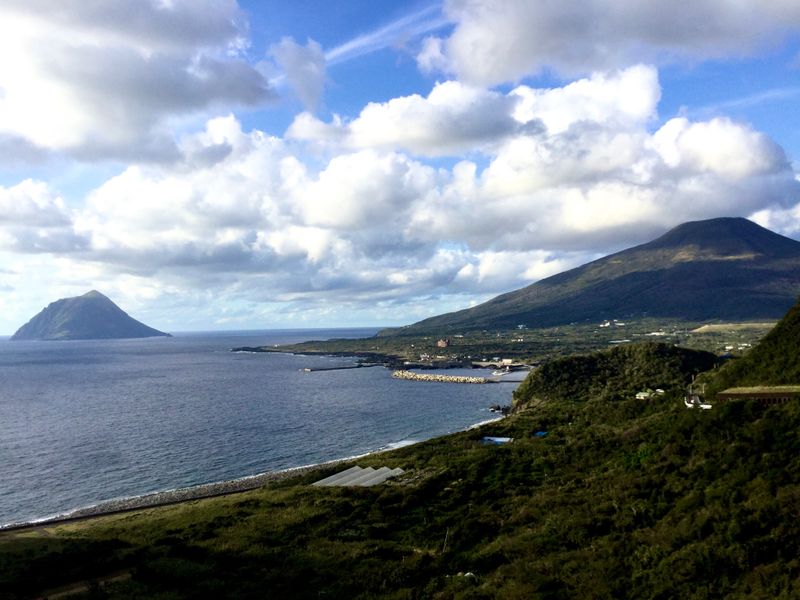
Spectacular Hachijojima views
The Izu Islands stretching 300 kilometers south of the capital are administered by Tokyo prefecture, caressed by southern winds and currents, and part of the Fuji-Hakone-Izu National Park. My favorite island getaway in the colder months is Hachijojima in the chain, with its unique culture and warm breezes.
Hachijojima has been inhabited since the Jomon Period, but the biggest wave of human settlement was after the Battle of Sekigahara when defeated daimyo, and later petty criminals, were exiled to the island. To their credit, the people who settled there didn’t discriminate between descendants, and a strong community grew. It has become a location to enjoy delicious local cuisine, vibrant local culture, and relaxing onsen retreats.
Here are my top tips for enjoying the beauty and culture of Hachijojima.
Get Around
Hachijojima’s shape is often likened to a hyotan, or calabash gourd, and is a little less than 15 kilometers from north to south, and at its narrowest, 8 kilometers across. On the north end is a volcano, Hachijo Fuji, the highest peak in the Izu Islands chain. On the southern end is Higashiyama, another volcano. It’s easy to explore the whole island in a day or two. However, the ferry access is foot passengers only, so visitors depend on island transport.
Visitors have a few choices for getting around. Perhaps the most convenient way is by rental car, and there are many car rental agencies and taxi companies.
For leisurely travelers who prefer not to drive, there is a bus route that reaches most places of interest. The bus company has recommended itineraries, too, to help visitors plan their trips.
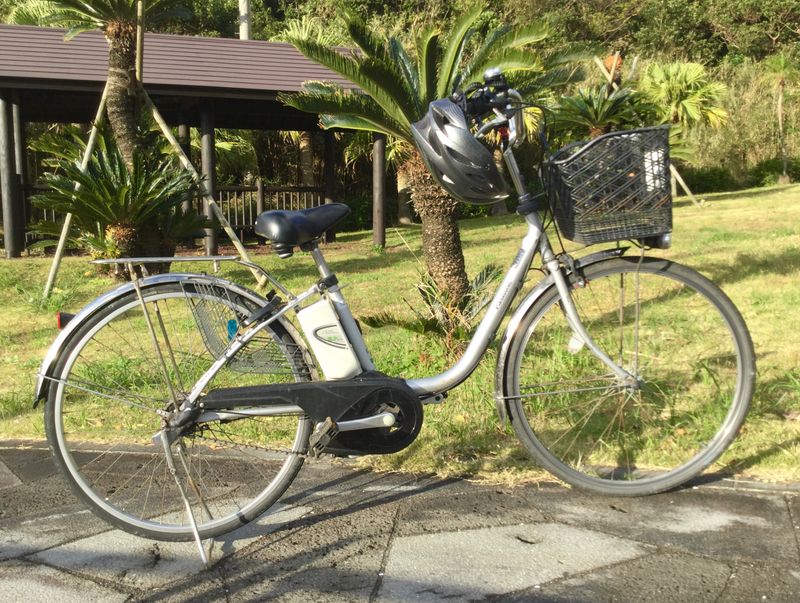
Electric assist bicycle
My preferred way of getting around is by bicycle. Many accommodations and car rental companies on the island provide bicycle rentals. Alternatively, bring your own bicycle on the ferry. On my recent visit, I rented an electric assist bicycle at my accommodation which got me up steep slopes. The benefit of cycling is you can take your time at various spots, enjoy the fragrance of the lush vegetation, and feel the breezes. The landscape of Hachijojima is mountainous and can be a bit challenging, but the views can be breathtaking.
Eat
Whether you drive, bus or cycle around the island, you’ll work up an appetite, and the food at Hachijojima izakayas, cafes and hotel restaurants will satisfy and surprise you with the variety, beautiful presentation, and flavor. You’ll encounter local cuisine and produce that is famous in the islands.
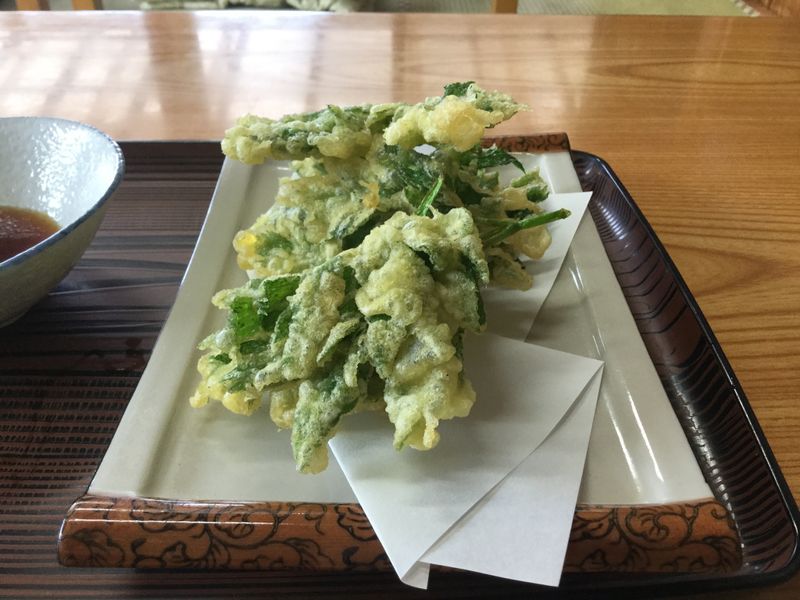
Ashitaba tempura
Perhaps the most famous produce of the Izu Islands is the vegetable ashitaba, “tomorrow’s leaf”, which is endemic to the Izu Islands. Ashitaba earns its name from its prodigious growth. The plant, which is related to carrots, grows surprisingly fast. If you cut the leaves in the morning, by the next day, new shoots sprout up. It’s a feathery leaf with a subtle taste that is at once both slightly bitter and is reminiscent of celery. It’s refreshing.
There is a bewildering variety of presentations of ashitaba. You can try ashitaba tempura and tea, ashitaba flavored salt and soft serve ice cream, and ashitaba canned drinks.
Of course, Hachijojima is an ideal place to enjoy the bounty of the sea. Many restaurants serve shima zushi, a variety of sushi marinated in soy sauce. It’s a delicious way to enjoy fresh catches. But there is another infamous fish dish that can grow on you. Kusaya, a kind of salt preserved fish, originates in the Izu Islands and is commonly served in restaurants and homes on the island. It’s noted for its pungent smell which can drive people out of the house with its stink, but it has a mellow flavor. I took the plunge and had ashitaba and kusaya with my dinner one evening. The complex flavors overcame my aversion to the smell.
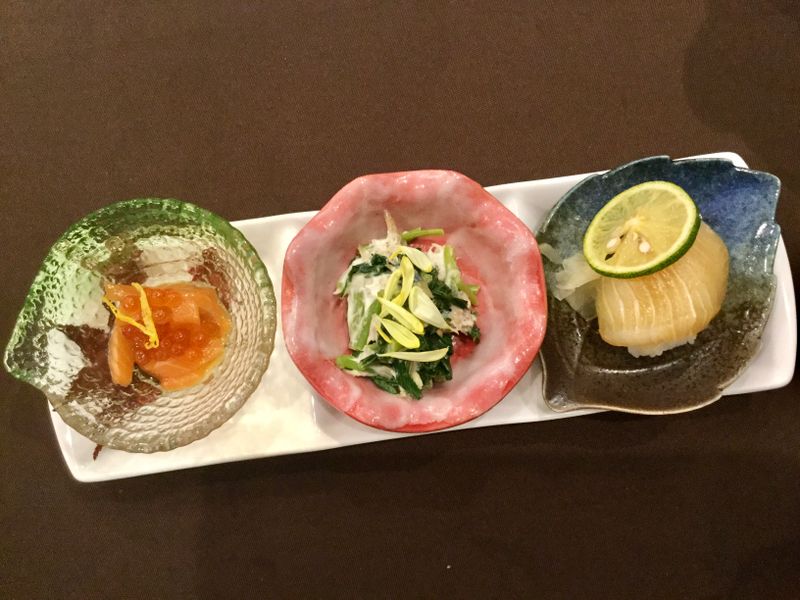
Fish roe, ashitaba-kusaya, and shimazushi with a slice of local citrus
Relax
Hachijojima has an abundance of relaxing places, from cozy guest houses, elegant hotels, and wild onsens. On my bike rides I stopped off at various wild and cultivated hot spring locations. One stunning location is the footbath, free to use, at the bottom of a bluff, Kirameki Foot Bath. After a long bike ride, this footbath is a great place to rest your legs in healing water and gaze out at the Pacific Ocean.
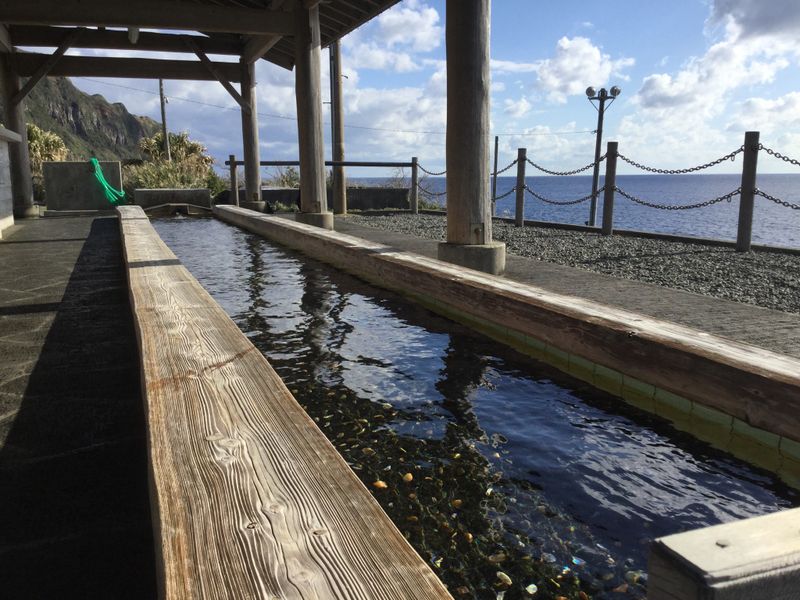
Kirameki Foot Bath
If the foot bath tempts you to soak your whole self, there are three options nearby. Just above Kirameki Foot bath are proper hot spring retreats The Boon Yasuragi Hot Spring. A bit further up the hillside is Uramigataki Waterfall and an open air hot spring free of charge. Bring a bathing suit as this is not a domesticated hot spring. This tiny bath, down a flight of steps below a spectacular waterfall, overlooks a ravine with lush vegetation. It’s no less pleasant than the others that require admission fees.
Further south down a winding, hilly road is Miharashi Yu. This hot spring spa has exceptionally mineral laden water and spectacular views of the steep cliffs of the island and ocean views. If you’re lucky, you might catch sight of whales and dolphins feeding off shore.
See
Hachijojima got its name from its most elegant product, kihachijo, a woven silk textile. This fabric production, designated by the national government as an important traditional craft, is made of silk colored with dyes derived from plants that are indigenous to the island. The black comes from beech trees, the yellow from kobunagusa grass, and the orange from laurel. The craftspeople hand dye, spin, and weave the fabrics in a laborious process that results in richly colored check patterns that have a slight sheen. In the past, the islanders sent the fabric as tribute to the government, since the island produces little rice that was historically used as currency.
At the Kihachijo Meyu Workshop, visitors can watch the craftspeople at their looms weaving the sturdy textiles. The workshop sells finished goods such as neckties and wallets at affordable prices besides luxurious bolts of the fabric and finished obi. The fabric is durable and washable, and as it ages, the colors become richer.

Kihachijo Meyu Workshop
Nearby is the Hattori Yashiki, a heritage house and café that was originally the home of the Hattori family that controlled the ships that served the island and the shogunate. Although it doesn’t look like much, it’s worth a visit to see the Kashitate dance and taiko drum performance on the tiny stage. Dancers dressed in kihachijo kimono perform the folk dance, and the Hachijojima drum style is distinctive. One drummer beats out a rhythm on one side of the drum, and the other improvises. This may be the only opportunity to hear the Hachijojima dialect, an endangered language, in the songs performed on this tiny stage.

Kihachji kimono clad women performing Hachijojima’s distinctive taiko drumming
There is a lot more to see and do on Hachijojima, and the Tokyo Islands website has advice about sights, activities, accommodation, and transportation.



2 Comments
genkidesu
on Dec 31
This looks like the perfect getaway! What a gorgeous spot.
TonetoEdo
on Jan 1
@genkidesu I went on some epic bike rides up steep inclines in rain showers, but didn’t mind it because the views are so beautiful. I’m curious about the other Izu Islands now...